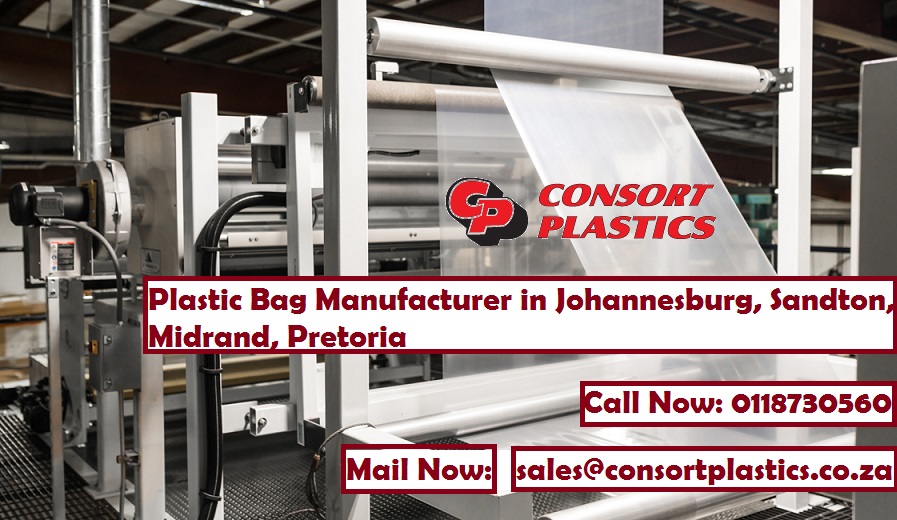Packaging has been the need of human kind from early time for storing, transporting, preserve foods, goods, products…The earliest time, people made the packets from animal skins, large leaves, vegetables to keep their food clean and fresh. In the war time, iron, steel can was invented to keep food safe for soldiers. In daily life, lots of materials were put in use: paper, glass, wood to corn, aluminum…With the dramatic innovation of technology, the interaction between people from different areas, different countries increase and demand of trading rises day by day, packaging in a most convenience way is necessary and vital. Plastic bag has been invented to meet that demand as an excellent solution. So how plastic bags are produced?
Plastic comes as a by-product of oil refining, and uses only 4% of the total world’s oil production. It is a ‘biogeochemical’ manipulation of certain properties of oil, into polymers, that behave ‘plastically.’ Plastic polymers are manufactured into 5 main types, of which, plastic bags are made of the type known as Polyethylene. From polyethylene, resins are produced and come straight into plastic bag’s production.
With special types such as food plastic bags, shopper plastic bags, luxurious plastic bags for famous brand names as soft loop plastic bags, rigid plastic handle bags, drawstring plastic handle bags, trifold plastic handle bags, wave top plastic handle bags, etc 100% virgin resins are used to make the best quality bags: strong, smooth and nice appearance. Customers also require other film colours of plastic bags (blue, green, orange, yellow, red…) to make the bags look various and impressive. That is why manufacturers will add master batches (colour resins) to change from transparent to the specific colours. If customers need the bags at cheaper prices, manufacturers will put few percent of additive materials such as CaCO3 (calcium carbonate) or and recycle materials to reduce bag cost. At this case, sometimes manufacturers will add an additive called impact modifier to make bags strong. When customers require plastic bags which can be destroyed easily in lands, suppliers must mix biodegradable additives as EPI or DW2 with quantity 1 or 2% when extruding.
The 1st process is blowing film or called extruding film. All the materials will be put into extruding machine to make big plastic film roll. In this steps, workers or technicians must control the bag rolls into smooth appearance.
The second step is printing process which is mainly used for shopping bags which many companies could customize the printing image with their logo, brand name, information about products…When getting orders with printing image, manufactures will create printing plates (printing cylinders) to put into printing machines. Images are analyzed into different colors; each colour will be controlled by one worker if the bags need print many colors or printing images are difficult.
The third step is cutting and sealing process. The plastic rolls are put into cutting workshop to make it into different shapes and different handles. There are a lot of cutting machines available served for different handles: T-shirt, die cut, soft loop, patch handle, rigid, flat merchandise, etc
For the special kinds such as drawstring plastic bags, rigid plastic handle bags, soft loop plastic handle bags, they are usually required some manual steps which can not be implemented by automatic machine. In manual workshop, workers have to sew the handles into the bags, putting the cardboard into gussets (customized to customer’s requirement), punching the hole…
To have a through look into the whole process of manufacturing plastic bags, please go to our website: https://www.consortplastics.co.za/plastic-bags/ to see the videos and information about types of bags. You can choose to buy your suitable plastic bags at high quality.
Plastic Bags
Plastic bags have been the packaging of choice for most people for many years now due to their sheer durability and reusable properties. Plastic bags are usually made of low density polyethylene and are produced in a variety of types such as plastic grocery bags, dry-cleaning bags, garbage bags or trashcan liners among others. Plastic bags are also more widely used in the trade industry as compared to their paper counterparts because it is more inexpensive, more durable, and is widely available. There are also a lot of companies that offer personalized plastic bags that also offer free help in designing the bags that would best fit your business, considering size, materials, use, closure, graphic design, even special pictures.
Common Plastic Bags
Companies that use semi- or fully-automatic packaging machines that usually package food including breads or meats, Wicketted plastic bags are recommended to match the needs of the said machines and the industry itself. There are also plastic bags with tape enclosure which may be resealed plenty of times called slug tape plastic bag. A lot of specialty apparel stores prefer cotton drawstring bags which are plastic bags with a string on the top brim for when to be pulled close. Hotels and dry cleaners also use these as laundry bags. A cheaper alternative to cotton drawstring bags are plastic bags that use plastic tape instead of cotton strings to pull the bags closed. Another common plastic bag is the back flip bags used for quick and easy packaging since it only requires folding over the top to actually secure the products. A lot of manufacturers and those in the packaging industry utilize staple packs which are plastic bags that are grouped together then stapled at the lip for efficiency and convenience. Probably the most popular plastic bag are the gusseted plastic bags which are basically pleated plastic bags that do not require much storage yet the pleats offer increased capacity.



